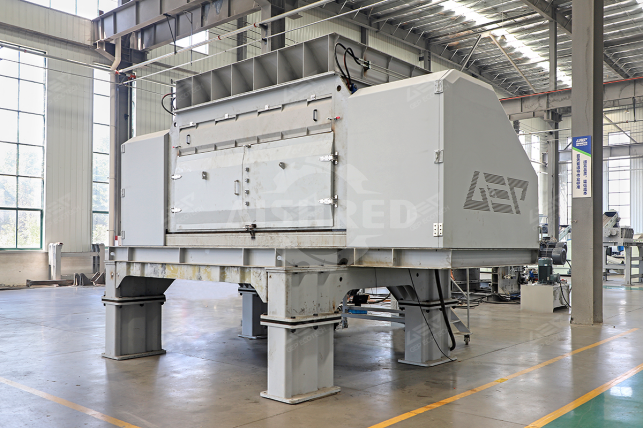Waste textile materials are highly favored for their high calorific value, uniformity, purity, and low ash content, making them a popular choice for producing RDF alternative fuels. Among the essential equipment, the single-shaft shredder plays a critical role in the process of converting waste textiles into RDF fuel.

Why Choose a Single-Shaft Shredder?
1. High Shredding Efficiency
The single-shaft shredder features a rotating shaft as its core component, utilizing the shearing and tearing action between high-speed rotating blades and fixed blades to break down materials. This design is particularly suitable for processing fibrous waste textiles, enabling rapid shredding into smaller fragments. The close coordination between the moving and fixed blades ensures thorough shearing and tearing of fibers, minimizing tangling and blockages, thereby significantly improving shredding efficiency. This high-performance shredding capability makes the single-shaft shredder an ideal choice for waste textile processing.
2. Uniform and Controllable Output
By adjusting the distance between the moving and fixed blades and replacing screens of different sizes, the single-shaft shredder can precisely control the particle size of the output, ensuring consistent and uniform shredded material. The equipment can flexibly adjust the particle size range (30–100mm) according to the combustion requirements of RDF. This uniform particle size distribution not only enhances the combustion efficiency of RDF fuel but also ensures stable calorific value, further improving RDF quality.
3. Easy Maintenance
The single-shaft shredder is designed with user convenience in mind. Its hydraulic one-touch screen opening function allows for quick screen replacement and cleaning, significantly reducing downtime. The modular blade design facilitates easy replacement, and the reversible blade edges extend tool life, lowering replacement costs. This design not only improves maintenance efficiency but also reduces operational costs, enhancing the equipment's economic and practical benefits.
Typical Process Configuration
In the waste textile shredding process for RDF production, the single-shaft shredder is typically paired with other equipment to achieve an efficient and stable production line. The standard process flow is as follows:
1. Primary Shredding: A dual-shaft shredder is used for initial shredding, breaking down large waste textile materials into smaller pieces for further processing.
2. Metal Removal: After primary shredding, metal impurities are removed using a magnetic separator to prevent damage to downstream equipment.
3. Secondary Shredding: The single-shaft shredder serves as the secondary shredding equipment, further reducing waste textiles to the optimal particle size for RDF production, ensuring combustion performance and calorific value.
4. Baling: The shredded RDF fuel is compressed and baled for easy transportation and storage.
If you are looking for an efficient and reliable waste textile shredding solution, the single-shaft shredder is undoubtedly your ideal choice. We can provide customized equipment configurations and professional technical support based on your material characteristics and specific requirements.
Feel free to contact us for more information or to consult on customized equipment solutions!

